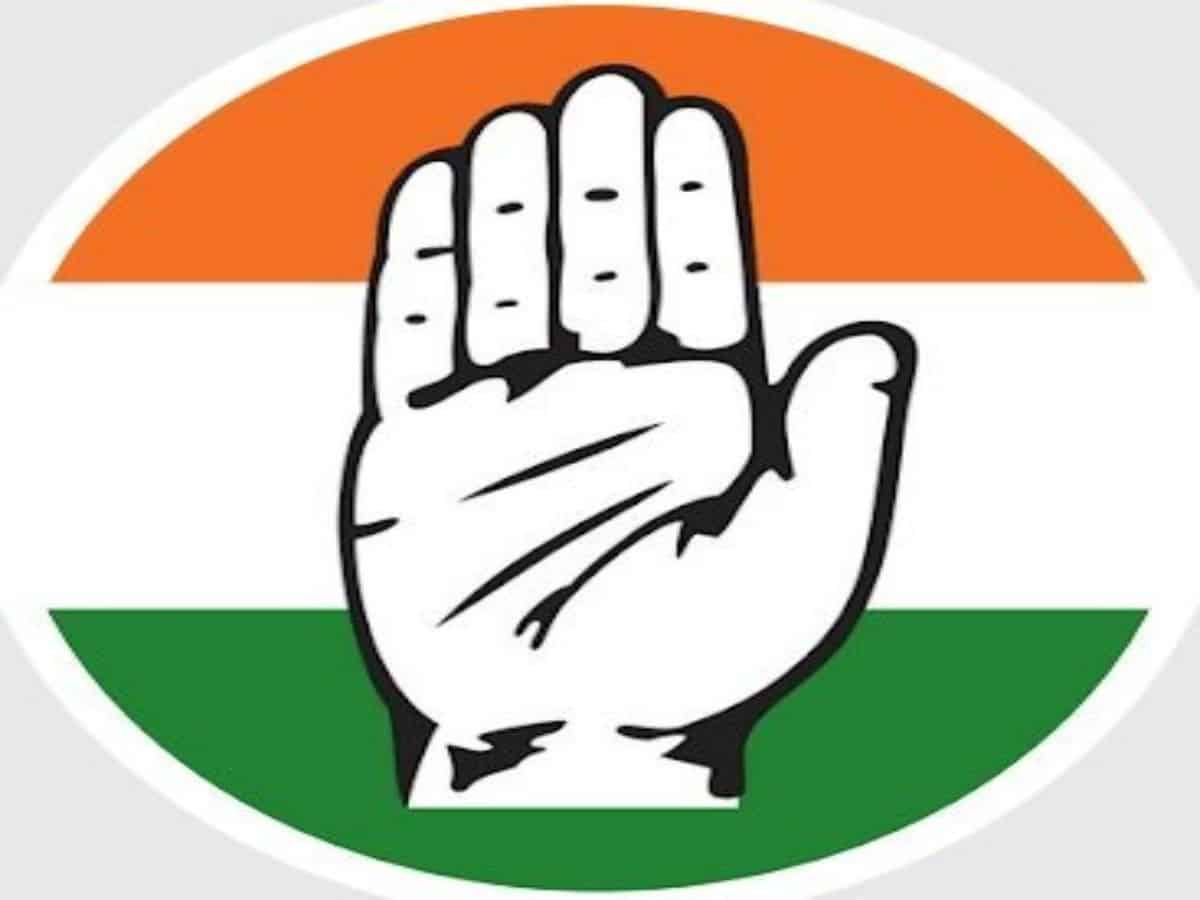
As India celebrates the 75th Anniversary of Indian Independence, the Indian Growth Story stands apart. Truly the Indian Growth Story is no less than a marvel, or even a miracle.
Indeed, the history of the Congress is so inextricably intertwined with the history of Modern India. The Congress-led India to Independence, besides emerging as the Architect of Modern India.
At the time of Indian Independence, not even a pin was manufactured in the country. The industry was destroyed and Agriculture was in shambles. Starting from scratch, India has since emerged as among the world’s fastest-growing economies.
Modernizing Hindu Society
Besides building a Modern Nation and achieving economic growth, there was a bigger challenge of transforming an ancient civilization into a modern society.
Jawaharlal Nehru modernized the Hindu social order, by doggedly battling against superstition. Nehru was instrumental in bringing forward the Hindu Code Bill. It brought the Hindus in step with modern times. Pandit Jawaharlal Nehru culminated the process of Hindu Social Reform, begun by Raja Ram Mohan Roy. So to say, a movement of fighting social evils like Sati and Child Marriages that started in 1828, with the founding of Brahmo Samaj, culminated in Nehru passing the Hindu Code Bill in 1955-56. It was a saga of 150 years of Hindu Social Reform Movement, where Gandhiji launched social protest for removal of Untouchability, with common dining with Dalits and Dalits Temple Entry Movement.
The greatest feat, yet unmatched in the world, is achieving this sort of economic development, social change and renaissance of the spirit in an open society and within the democratic framework.
Challenge for Congress
This was a great challenge for Congress. In her address at the 57th Conference of the Inter-Parliamentary Union in New Delhi on October 31, 1969, Indira Gandhi remarked, “If there are problems, and indeed there are many, they arise not from any Constitutional insufficiency, but from scarcity of resources, which creates situations, where even justifiable demands outspan the means to meet them. The earlier suppression of culture and language, alongwith economic disparities, gives rise to fierce regional pride, which sometimes misleads the people to temporarily regard their immediate regions as something bigger than the nation.”
This assumes significance in the backdrop of the Punjabi Suba and the Telangana agitations she had to face and deftly tackle. But Indira Gandhi had abiding faith in the Constitutional scheme of things. She went on to add, “But the federal system is a Constitutional answer to the conflict between centrifugal and centripetal forces.”
International Aid
This was achieved also in more trying circumstances when international aid came with strings attached to it. The very notion of Donor-Recpient nations, Indira Gandhi argued, was insidious and smacked of Neo-Colonialism.
The Thal-Vaishet Fertiliser Project in 1980, when the United States-based World Bank tried to arm-twist the Indira Gandhi Government, is a case in point. When the World Bank decided to effectively withdraw the Rs 190 crore loan, Indira Gandhi decided to go ahead on her own with the Rs 600 crore Thal-Vaishet Fertiliser Project. The US Government handed out a protest note and it directed the American Directors in World Bank to keep an eye on the loan, till the Indian Government appointed the World Bank approved Consultant, a case of aid with strings attached to it.
Indira Gandhi thundered to the US that it cannot interfere in India’s internal affairs.
In her Address to 57th IPU, Indira Gandhi further pointed out, “Stated simply, the issue is whether international aid is to remain primarily an instrument of national policies of the donor countries, or whether it becomes part and parcel of genuine international cooperation for development. Like all developing countries countries represented in the UNCTAD, India would like to see the whole pattern of international trade and aid in a new perspective of international cooperation. International aid, as at present conceived and administered, has produced disenchantment among the recipients, as well as among the donors.”
Indira Gandhi argued that the West attained prosperity by exploiting the natural resources of the underdeveloped and developing world. The West had a moral responsibility to aid and assist the underdeveloped and developing world, in their bid to achieve development. Her unmistakable warning was that there cannot exist islands of prosperity in the midst of poverty.
In the early 1980s, Indira Gandhi took two major initiatives. One was delivering the Raul Prebisch Lecture, wherein she called for a New International Economic Order. The other was her stellar role in the revival of North-South Dialogue at the Cancun Summit. Mexican President Jose Lopez Portillo had tasked Indira Gandhi to use her good offices to persuade the then US President Ronald Reagan to attend the Cancun Summit, in order to make the North-South Dialogue truly meaningful. Indira Gandhi did succeed to persuading Reagan to attend the North-South Dialogue at the Cancun Summit in Mexico.
Economic Reforms
Economic Reforms were by no means rejection or repudiation of the Socialistic Pattern of Society. That was the goal adopted at the Congress Session in Avadi in 1955 and later enshrined in the Constitution through the Constitution 42nd Amendment in 1976.
As India had attained a stage of development, where she was not eligible for concessional aid, owing to the level of development reached, Indira Gandhi had to reorient her economic policies.
At the time of enactment of Foreign Exchange Regulation Act (FERA) in 1973, Indira Gandhi wanted Government equity brought down to 49 per cent. Her move created a furore in the Socialist ranks in the party, forcing her to keep Government equity at 51 per cent.
In 1980, when she returned to power, Indira Gandhi did not renew the India, Soviet Treaty of Peace, Friendship and Cooperation signed on August 9, 1971, for a period of 10 years. Indira Gandhi started improving India’s relations with the United States under US President Ronald Reagan, who held her in great personal esteem and regard. She started the work on reorienting the economic policies. Rajiv Gandhi, too, pressed ahead in that direction during his tenure as Prime Minister from 1984 to 1989.
Finally, the Blueprint for Economic Reforms was unveiled in the Congress Election Manifesto in 1991. P V Narasimha Rao, who came to power after the tragic assassination of Rajiv Gandhi on May 21, 1991, set out the parameters for Economic Reforms.
Sale of equity was to done only to PSU Banks and PSU Workers, which was in keeping with Indira Gandhi stand to give workers participation in management.
It was not unbridled sellout of Public Sector Enterprises, as made out by subsequent BJP Governments, under Atal Behari Vajpayee and Prime Minister Narendra Modi.
Safety Nets
Narasimha Rao also brought Safety Nets for vulnerable sections of society to protect them from the fallout of Economic Reforms.
Narasimha Rao brought forward the Employment Assurance Scheme (EAS), which was a forerunner of MGNREGA brought later by Congress President Sonia Gandhi. Apart from MGNREGA, Sonia Gandhi brought in National Food Security Act that provided 80 per cent of population with access to foodgrains at confessional rates.
Socialism is an article faith with the Congress, while Economic Reforms is only a tool for resources mobilization to run welfare schemes. There is no conflict of interest between Socialism and Economic Reforms, as is commonly made out.
Myth of GDP
The GDP growth rate may be accepted norm, but may not adequately reflect the economic development achieved in a developing country.
Growth rate in India from 1950 to 1964 was at an estimated 3.9 per cent; from 1965 to 1979, it was 3.0 per cent; from 1980 to 1992, 5 per cent; from 1993 to 2004, it was 6.7 per cent; and during 2004 to 2014, it was an average of 8 per cent.
GDP slipped from 3.9 to 3.0 per cent between 1965 to 1979 because of the huge turmoil during the period.
There were three wars thrust upon India in 1962, 1965 and 1971. There was international oil crisis in 1973. Agitations like those of Punjabi Suba and Telangana were a huge challenge. The Nav Nirman Movements in Gujarat and Bihar, the Railway Strike in 1974, the JP Movement and the agitations that rocked the nation in the wake of judicial pronouncement in the Allahabad High Court judgment of Jun 12, 1975, all sought to throw the nation out of gear. The resolute action taken by Indira Gandhi by declaring Emergency on Junec25, 1975, helped bring the nation back on the rails; as any Government worth its salt would, although Indira Gandhi paid the political price in the General Election in 1977.
Besides, GDP figures could be deceptive and misleading, not really reflecting the actual growth taking place in the country.
Garry Jacobs argued that potatoes grown and consumed by the people do not get reflected in GDP figures. He emphasized the need to develop alternative methods to measure economic development not truly reflected in the GDP.
Stages of Development
At the dawn of Indian Independence, Pandit Jawaharlal Nehru laid the foundation for Industrialization. He focused on Heavy Industries, building of Infrastructure and the construction of Irrigation Dams like Bhakra Nangal, Hira Khud and Nagarjuna Sagar, which came to be known as Temples of Modern India. Education, Healthcare, Nuclear and Space Research, to Cultural Institutions for development of the regional personality within the ambit of National Unity and Integrity, were all started in right earnest.
India under Indira Gandhi achieved Green Revolution, providing self-sufficiency in foodgrains to a developing economy, which was the envy of even the Developed World.
Indira Gandhi also achieved the greatest marvel of science, the Nuclear Test at Pokhran on May 18, 1974, which was an implosion, without the fallout of radiation. ISRO was established and the first Indian astronaut to enter the Space was Squadron Leader Rakesh Sharma. When Indira Gandhi asked Squadron Leader Rakesh Sharma how India appears from the space, he invoked Allama Iqbal to answer her question, Saare jahaan se achha.
India under Rajiv Gandhi saw laying the foundations for India’s entry into 21st Century. Rajiv Gandhi laid the foundation for Digital India by bringing about the Computer and Telecom Revolutions, besides the New Education Policy of 1986, which stressed on special emphasis on removal of disparities and to afford equal educational opportunities for Women, Dalits, Adivasis and Weaker Sections.
False Slogan
Back to Gandhi was a slogan given by Minoo Masani. BJP under Atal Behari Vajpayee talked of Gandhian Socialism. All this was done to spite the Congress.
But it is interesting to know what Gandhiji really stood for. He may not have stood for the variation of Fabian Socialism, which Congress stood for. It meant equity and social justice and to ensure that the Congress believed in the State controlling some of the means of production.
Gandhiji stood for the principle that no one should hold property and he believed in the ideal of Trusteeship.
In fact, Gandhiji stood for what is a repudiation of what Swantatra Party and RSS political offshoots, Bharatiya Jan Sangh and Bharatiya Janata Party, believe in. There are the parties that opposed Land Reforms, Banks Nationalization and Abolition of Princely Privileges and Privy Purses.
For the Congress, on the other hand, Gandhiji gave the impulse to the various party and Government initiatives. Pandit Jawaharlal Nehru translated Gandhiji’s Non-Violence into a practical ideal of World Peace. Nehru launched the Panchayati Raj to realize the ideal of Gram Swaraj. Rajiv Gandhi conferred Constitutional status on it. Congress President Sonia Gandhi has been instrumental in persuading the United Nations to observe Gandhi Jayanti on October 2 every year as International Non-Violence Day.
Gandhian Ideology has been the guiding force for the Congress. Reaching out to the last man in the queue has been the principle behind all party policies and programmes, starting from Pandit Jawaharlal Nehru down to Sonia Gandhi.

